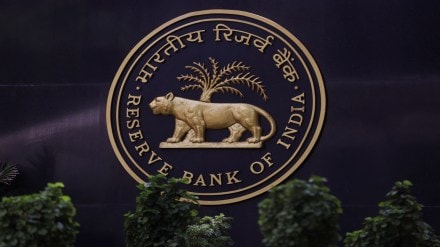The Reserve Bank of India (RBI) is finally seeing some cohesion in economic data around growth and inflation that could provide a base for policy easing, while seeing some needed adjustment on exchange rate, which indicates a shift in policy approach, under the new Governor, stated a report by Bank of America (BofA) Securities. Further, with the delay in implementation of universal tariffs by Donald Trump-led US government, RBI is expected to prioritize domestic growth, by both injection of durable liquidity, and space to cut policy rates. Per BofA Securities, the RBI is expected to cut the repo rate by 25bp to 6.25 per cent in the February MPC, potentially in a unanimous decision, and take steps to inject durable liquidity, by considering another reduction in CRR of 50bp, or substantial bond purchases through open market operations. This will be the final meeting of FY25, which will be held from February 5 to 7.
The new leadership has provided significant liquidity and anchored front end rates, while letting the rupee adjust in the face of significant pressures, revealing a preference for supporting growth. “This shift in rupee management, coupled with a renewed focus on policy orthodoxy is a clear sign of a change in RBI’s policy playbook, in our view,” said Rahul Bajoria, Head of India & ASEAN Economic Research, BofA Securities.
According to a Bloomberg report earlier, RBI Governor Sanjay Malhotra is showing a willingness to allow the rupee to move more freely in tandem with peers in the region. He has shown keen interest in the RBI’s currency intervention functions and agreed with his team when they explained the recent movements in the rupee and the need to allow it to depreciate.
RBI to cut policy rate
The BofA Securities report maintained that growth and inflation data both point towards the need to ease monetary conditions, while projecting a 25 bp repo rate cut to 6.25 per cent in February MPC. It also projected another reduction in CRR of 50 bp. This, it added, can help prevent spikes in short end rates, amid ongoing intervention in the foreign exchange market. “Given our growth and inflation projections, we expect the RBI to prioritize growth as supply shocks fade. We maintain our view that the RBI could cut rates by 100bp in the cycle, given a durable alignment of headline CPI close to 4 per cent through 2025. This will bring the repo rate to 5.50 per cent by end-2025, which we identify as being close to the neutral rate,” said Rahul Bajoria.
Challenges for RBI
While policy approach is changing, BofA Securities said, the RBI is still staring at an economy which is experiencing weak demand conditions, and inflation which is now again declining rapidly, as perishable food prices dropped on better supply conditions. With two external members willing to cut rates even with inflation above the tolerance band in December, the brokerage firm said that the clamor to bring rates lower is expected to only grow in February.
The RBI has been facing a growing trilemma between supporting growth, focusing on inflation and aiming for exchange rate stability. This time, the RBI Governor has changed with Sanjay Malhotra taking charge. Moreover, Deputy Governor Michael Patra, the longest standing member of the MPC since its inception in 2016 has also retired, and the RBI has a deputy governor vacancy which could be filled just before the MPC meeting. Further, there are also three new external members who joined the MPC just in October, which in turn gives the MPC a fresh look, and also possibly a different approach.
“A clear shift is now visible when it comes to policy actions, with RBI going back to a more orthodox policy management approach. Since Governor Malhotra has taken over, the rupee has become much more flexible, and the tightness in liquidity conditions have been met with injection of liquidity through variable repo rate auctions. The global policy backdrop, commodity prices, and outlook for capital flows do not show a lot of wiggle room, when it comes to policy maneuverability,” said Rahul Bajoria.
Macro conditions still sub optimal
Both growth and inflation, the two primary factors which influence monetary policy, are moving in the right direction. GDP growth remains uninspiring and sub-par, even though it’s slowly recovering from its lows of 5.4 per cent YoY in Q3 2024. CPI inflation is losing momentum rapidly. “This reversal is largely due to perishable food prices coming down as supply conditions improve, and we had factored this reversal and flagged it previously. Further, with core inflation staying below 4 per cent, the underlying demand conditions remain weak, and may not exert considerable inflationary pressures in the near term,” said Rahul Bajoria.
